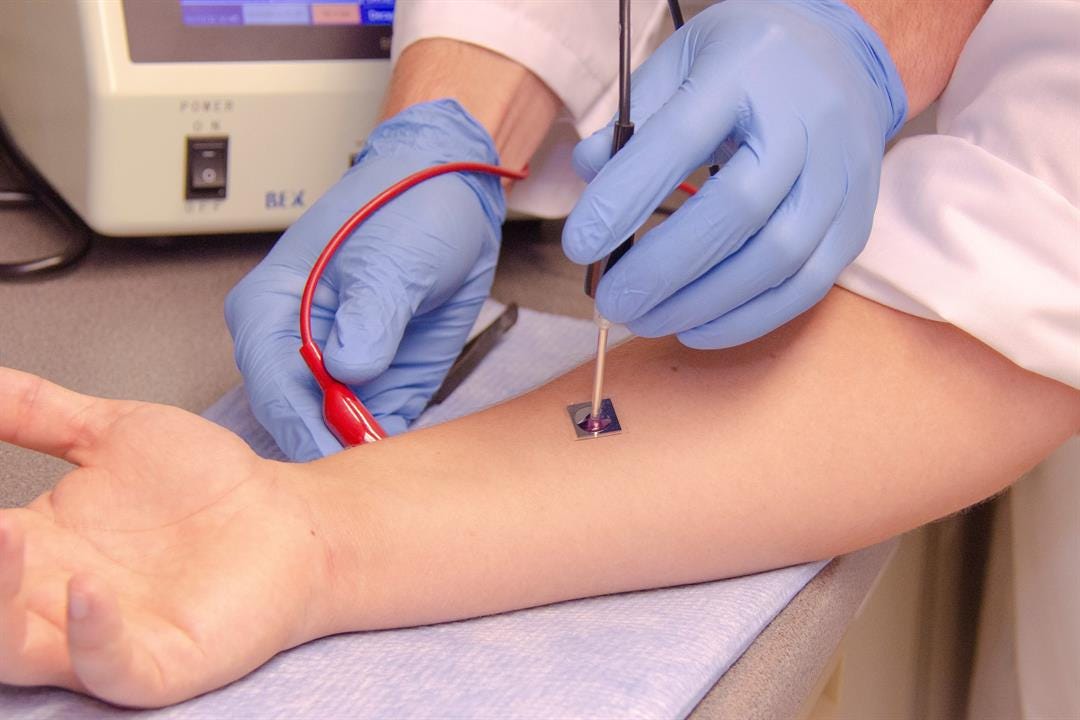Sen’s Research, Vision Position Indiana to Lead Regenerative Medicine
 Sen is developing a promising technology that reprograms skin tissue to assume the functionality of tissues or organs that are no longer working properly.
Sen is developing a promising technology that reprograms skin tissue to assume the functionality of tissues or organs that are no longer working properly.
Subscriber Benefit
As a subscriber you can listen to articles at work, in the car, or while you work out. Subscribe NowRegenerative medicine has “crossed the chasm of impossible to possible,” says a nationally-renowned expert who is leading the charge in Indiana to trailblaze the “new horizon in medicine.” Indiana University School of Medicine (IUSM) Associate Vice President of Research Dr. Chandan Sen believes the new frontier will dominate the practice of medicine within a decade. Sen asserts “somewhere in the world [regenerative medicine] will succeed”—and he believes the steady march forward in his research, combined with the state’s “fertile ground,” make Indiana a contender.
“Over 150 years ago, pills came into medicine, less than 100 years ago…devices came into medicine, and now, we have a new platform coming into medicine,” says Sen. “It’s not pills, not devices, but—for lack of a better expression—it’s body parts that will be made and plugged back into the living body.”
As a result of aging, disease or trauma, organs and tissues lose function; regenerative medicine is the process of creating living, healthy tissues to recover those functions. Sen—whose recruitment was supported by the INCITE program–is among the nation’s leading experts in the cell-based therapy. Less than a year ago, he left The Ohio State University to be the inaugural director of IUSM’s $20 million Indiana Center for Regenerative Medicine and Engineering.
Sen relocated his team of more than 30 scientists and staff to Indiana—a rare move in academics and unprecedented at the university—to continue his groundbreaking research in the emergent field. Among his many research endeavors is a promising technology that converts skin tissue into entirely different kinds of tissue that assume the functionality of tissues or organs that are no longer working properly.
“For example, [a patient] has lost or mangled blood vessels due to trauma, so part of the body is not receiving blood supply,” says Sen. “We have found an approach to convert your own skin—not the blood vessels of your skin—but the skin tissue into blood vessels, which then carry blood into the affected site. We call that in vivo reprogramming.”
The non-invasive, nanochip device works with a simple touch and electric spark that is harmless to the human body. Sen says the licensed technology could ultimately help prevent amputations in diabetics and repair nerve damage due to neuropathy, among other applications.
A second area of his research involves disrupting the vicious cycle of antibiotic resistance: scientists develop new antibiotics that, in turn, generate resistant bacteria. Sen’s method relies, instead, on a “physical approach”—specifically, using an electric field to disrupt infection.
Acknowledging that he was “happily anchored” at Ohio State, Sen says IU Health’s commitment to moving discoveries from the laboratory to patients enticed him to Indiana.
“That’s a risk—in the sense of a business risk. To have the element of uncertainty come into your business model—a lot of people are scared of that. Here, it looks like they have the appetite. That’s a huge draw,” says Sen. “Secondly, across the state of Indiana, you have numerous, quite successful life sciences businesses that are willing to work together as one network, and I see a lot of promise. We scientists can only take our product from imagination to some level of realization. But from realization…to productization, commercialization and then implementation, it requires a large number of people—really, a pipeline of talent and infrastructure that seem to be rapidly developing here in Indiana.”
Sen cautions that regenerative medicine is not without significant challenges. Science, and the public in general, are familiar with drugs, devices and vaccines, but engineering living tissue to “plug back into the body” is a paradigm shift in biology, healthcare and society. The new frontier will demand changes in training; for example, IUSM is developing the nation’s first master’s and PhD program in regenerative medicine and engineering.
Sen says regenerative medicine will also require throwing out old molds for funding and engaging the public with “town hall-type meetings.”
“You’re recreating a part of—if I may exaggerate a little—human civilization by digging into this very new dimension that isn’t about a particular disease or solution, but a new paradigm,” says Sen. “There’s no question regenerative medicine will be successful. Whether Indiana will play a major role in that—that’s the question, and the answer needs to be yes.”
Sen says regenerative medicine recognizes the body as an “engineering marvel” that will demand experts in a variety of fields.
Sen says the disruptive nature of regenerative medicine requires engaging tomorrow’s workforce “at the ground level” and creating new structures for funding.
Sen says Indiana has the ingredients to move discoveries to the patient’s bedside.
